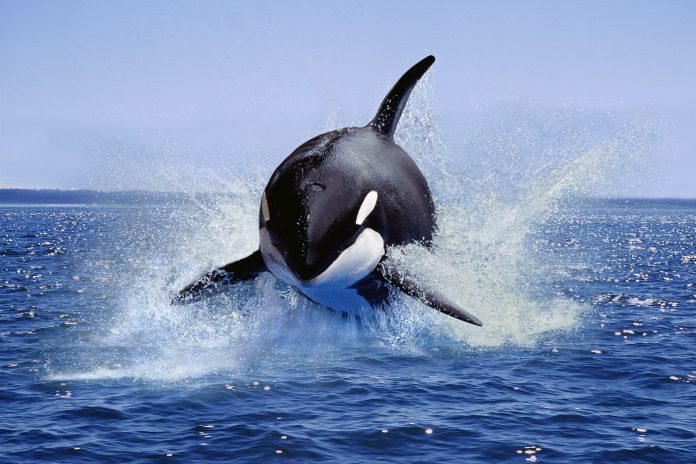Killer whales seen preying on great white sharks are driven by a clear motivation: They want to feast on the shark’s nutrient-rich livers. But a recent spate of orca attacks on a different target—sailboats—has scientists grasping for explanations.
A group of three orcas repeatedly rammed a sailboat in the Strait of Gibraltar, off Spain’s Iberian coast, on May 4, disabling the rudder and forcing the boat’s owners to request a tow to port. The boat sank before reaching the dock while being towed. Skipper Werner Schaufelberger told the German publication Yacht that one large orca and two smaller orcas appeared to work together. “The little ones shook the rudder at the back while the big one repeatedly backed up and rammed the ship with full force from the side,” Schaufelberger said.
There have been hundreds of similar reported orca attacks on boats in the area in the last three years. In May 2022, Spanish News Today noted that two dozen incidents of orcas ramming sailboats had occurred in the strait in only two months.
The assaults tend to follow a similar pattern, according to a study published last summer by the journal Marine Mammal Science: The orcas approach from the stern to strike the rudder, often destroying it entirely. Study co-author Alfredo Lopez Fernandez, a biologist at the University of Aveiro in Portugal, told Live Science that attacks are rare and orcas tend to break off their assault after disabling the boat. “In more than 500 interaction events recorded since 2020, there are three sunken ships,” Lopez Fernandez said. “We estimate killer whales touch one ship out of every hundred that sail through a location.”
Why Are Orcas Ramming Boats?
Explanations vary. Lopez Fernandez suggests it could be triggered by a traumatic event experienced by one killer whale: “a critical moment of agony”—a collision with a boat or entrapment during illegal fishing—that flipped a behavioral switch” and caused the orca to lash out. The behavior, this theory holds, then was mimicked by other members of the highly social species. Another explanation proposes that the orcas enjoy the water pressure produced by a boat’s propeller and are seeking it out when they interact with boats. “What we think is that they’re asking to have the propeller in the face,” Renaud de Stephanis, president and coordinator of Spain’s CIRCE Conservation Information and Research Group, told NPR after a ramming incident off the coast of France. Encountering a boat with no running propeller, “they get kind of frustrated and that’s why they break the rudder,” de Stephanis said.
Read Next: Florida Man Survives Intense Shark Attack While Spearfishing 70 Feet Below the Surface
Other scientists say the incidents may just be a cetacean form of teenage kicks: a fad that roughhousing adolescent orcas have picked up from each other. There’s precedence for the idea. In 1987, a female killer whale started swimming around with a dead salmon on her head. Within weeks the behavior had spread to two other pods of orcas, according to a 2004 paper in Biological Conservation. The fashion for “salmon hats” eventually faded away, like acid-washed denim and skinny jeans.
Whatever the cause, the ramming incidents have been serious enough to cause Spanish officials to already twice temporarily ban small boats in areas where frequent orca encounters were reported.








